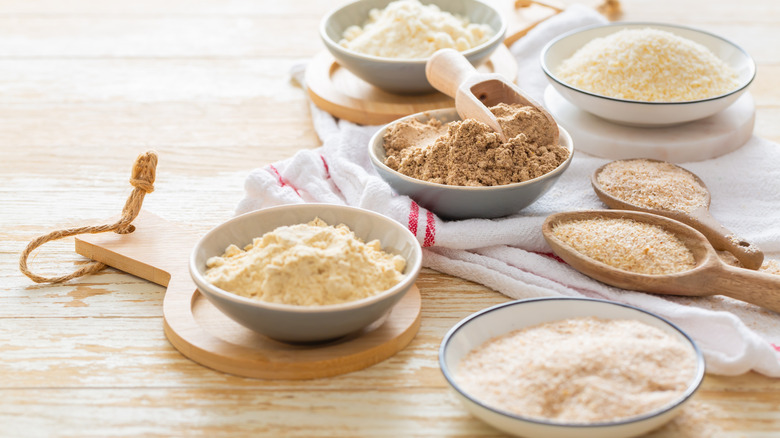What's The Best Flour To Use For Gluten-Free Baked Goods?
We may receive a commission on purchases made from links.
If you are preparing dinner for friends or family, it's possible that someone attending will be eating gluten-free (according to a 2024 survey conducted by Statista, 9% of women and 10% of men are now following this diet). Thankfully, that doesn't mean you have to abandon your plan to make your favorite cake or cookies. Sofia Schlieben, corporate pastry chef at JF Restaurants, told Food Republic that you can get great results using a blend of various gluten-free flour options, which can be "swapped one-for-one in your favorite recipes." For example, Ina Garten's secret ingredient for her gluten-free chocolate cake is chef Thomas Keller's Cup4Cup gluten-free flour.
However, Schlieben adds that she recommends mixing your own flour blend to suit your particular bake. For savory applications, she often likes to use chickpea flour. "It has great texture," she says, "though it does bring that signature chickpea flavor." For sweets, she prefers to use a blend of "white rice flour, tapioca, and cornstarch, with just a pinch of xanthan gum to bring it together."
How to make your gluten-free bakes shine
If you're taking a standard recipe and making it gluten-free, Sofia Schlieben recommends choosing baked goods that don't rely heavily on gluten development, like tender cakes, soft cookies, or no-knead breads. "Recipes where you're typically told not to overmix are great candidates," she suggests. Overmixing can happen when you're bringing together wet and dry ingredients. When using traditional flour, it's also the point at which gluten forms. If you mix for too long, too much gluten can form, making cookies, cakes, quickbreads, and pastries tough. "Since there's no gluten to over-develop [with gluten-free flour]," Schlieben says, "you don't need to worry about toughness from overmixing. In fact," she continues, "extra mixing can help hydrate the flours more fully and improve the final texture."
Another thing to keep in mind is that gluten-free baked goods need more liquid than their conventional counterparts, since the flours themselves tend to be more absorbent. Add small amounts of liquid ingredients until the batter or dough is the correct consistency.
It might take some trial and error, but since gluten-free foods like bread can be expensive — and even cost as much as 183% more than conventional foods, according to a 2019 study by Columbia University — making your own baked goods may be an economical choice. Plus, this way you'll help your gluten-free friends and family members have their cake and eat it, too.


